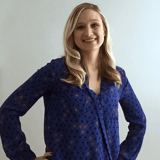Summary
While Design Operations (DesignOps) is only a few years old as a practice, it is evolving rapidly. As we finish our 4th year at The Summit, we've seen so much change in our community of practice in this short time. So, we want to end this year's Summit with a look beyond. If we are to be resilient what are we being resilient towards. Jon Fukuda (Limina), Dominique Ward (Atlassian), and Adrienne Allnutt (LinkedIn) will share their perspectives on where DesignOps is going and why. Moderated by Dave Malouf (Northwestern Mutual). We will be fielding questions from attendees, too.
Key Insights
-
•
Design operations must manage design orgs like businesses, focusing on profitability defined as positive impact on humans and environment.
-
•
Seven failure points—value delivery, cost control, right talent, connectivity, systems, employee experience, leadership—are critical risks design ops must mitigate.
-
•
Design ops roles primarily manage business operations and infrastructure while design practice managers focus on strategy and innovation.
-
•
Adopting a service design mindset enables design ops to handle complex, multi-level systems with evolving feedback loops for long-term resilience.
-
•
Scaling design ops is not about growth in size but about deeply understanding nested units (individuals, teams, orgs) and optimizing them holistically.
-
•
Effective integration of numerous tools across workflows is essential to reduce context switching and tool fatigue in design operations.
-
•
Clear role definitions, shared business language, and translation between design and business priorities improve alignment and strategic decision-making.
-
•
Pre-mortem exercises and experience visions are effective methods for anticipating obstacles and shaping future design operations outcomes.
-
•
Creativity in design ops requires a balance of structure and freedom, analogous to music learning and jazz improvisation.
-
•
Despite AI advances, the human-centric, empathetic nature of design ops work ensures the role remains indispensable.
Notable Quotes
"Design organizations customers are their partner organizations, like engineering, product management, marketing, and the executive suite."
"Without real business world experience, most leaders struggle with the overwhelming amount of demands placed on them."
"Design ops needs to shift from reactive to proactive, envisioning a future state vision and moving from disaster recovery to continuous resilience."
"We need to create evolving system loops that incorporate feedback and allow our units of one to learn and adapt."
"Scaling is not just about more but about providing solutions at scale using nested units like Russian dolls."
"Streamlining and integrating our tools is vital to reduce fatigue and maximize team effectiveness."
"Creativity and structure go hand in hand, like learning notes and then improvising jazz in music."
"Design ops must run as a business, setting KPIs, managing budgets, and delivering measurable value."
"Minimum lovable product is a better focus than minimum viable product in design ops to deliver meaningful impact early."
"AI won't replace design ops roles because we are building for real human needs requiring empathy and human creativity."
Or choose a question:
















More Videos

"Community input is invaluable in crafting solutions that work for everyone."
Lena ShenkarenkoCollaborative Wireframing for Creating Team Alignment and Shipping Better Products
October 21, 2020

"Low UX maturity is often a symptom of a bigger problem in how you build product, not just design adoption."
Bob Baxley Sara Asche Anderson Sharon Bautista Frank Duran Jamie Kaspszak Abbey Smalley Sylas SouzaTheme 4: Discussion
January 8, 2024

"Adding inclusivity to the career ladder took three years and this is still a living document with room for change."
Laine Riley ProkayHow DesignOps can Drive Inclusive Career Ladders for All
September 30, 2021

"You cannot do design today, even product or service design, without being systemically engaged."
Paul Pangaro, PhDSystems Disciplines: Table Stakes for 21st Century Organizations
June 6, 2023

"You can't spell the word air without saying ai, it requires those letters."
Uday Gajendar Louis RosenfeldDay 1 Welcome
June 4, 2024

"Discovery habits don’t stick because of training. They stick because of scaffolding."
Bianca JeffersonFrom Sprints to Systems: Operationalizing Continuous Discovery Through DesignOps
September 10, 2025

"Six million people worldwide have died of COVID. Millions more are dealing with lasting effects."
Chris GeisonTheme 1 Intro
March 9, 2022

"There isn’t yet a good way to measure emotional quality of design, only accuracy, safety, and cost."
Teresa SwinglerLook, Up in the Sky! UX/UI for Aerospace
October 27, 2022

"Community is not a monolith; we must engage a broad intersection of voices, not just one perspective."
Amy Paris Danielle ThierryDelivering Equity: Government Services for All Ages, Languages, Sexual Orientations, and Gender Identities
December 9, 2021



















